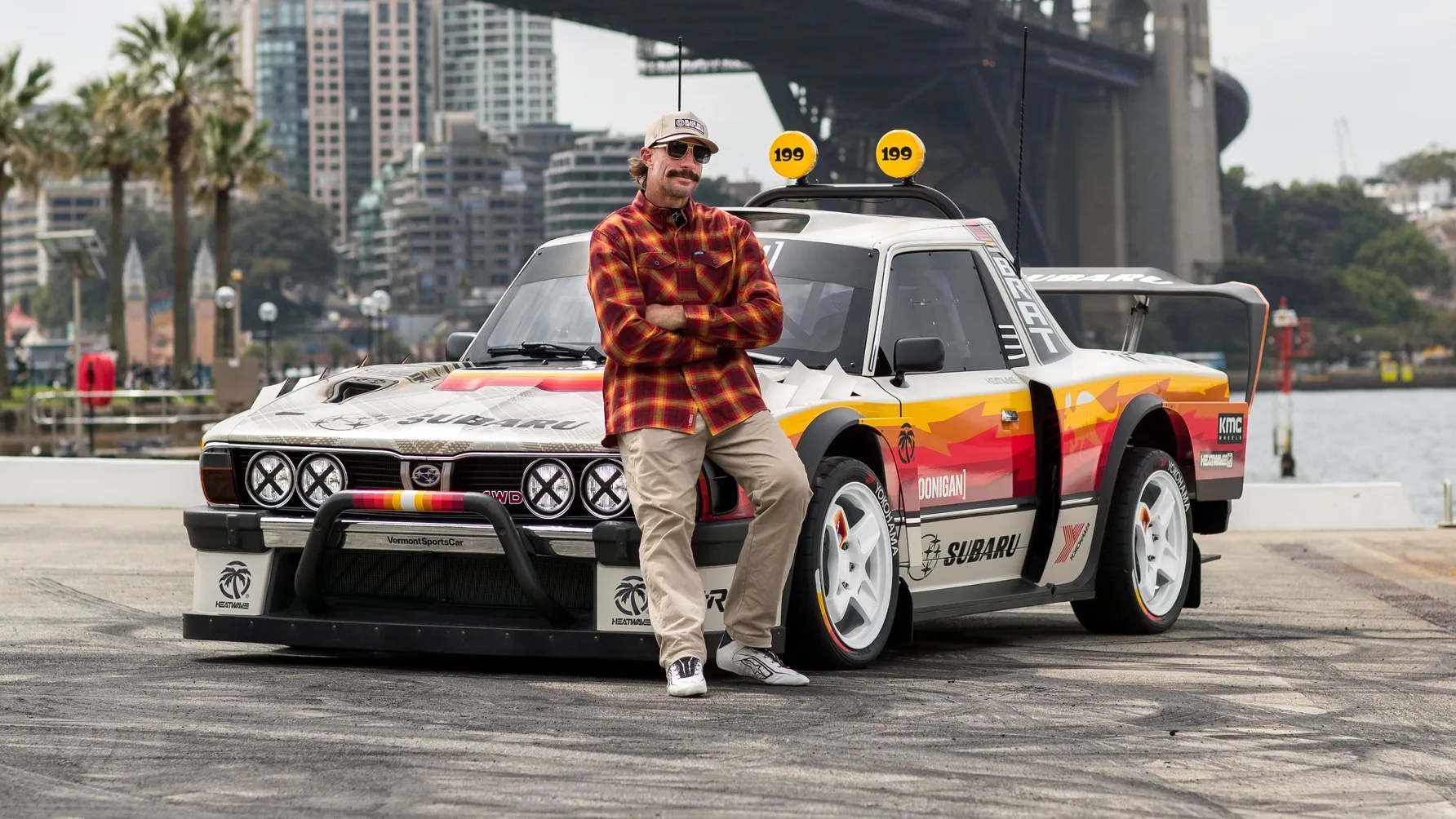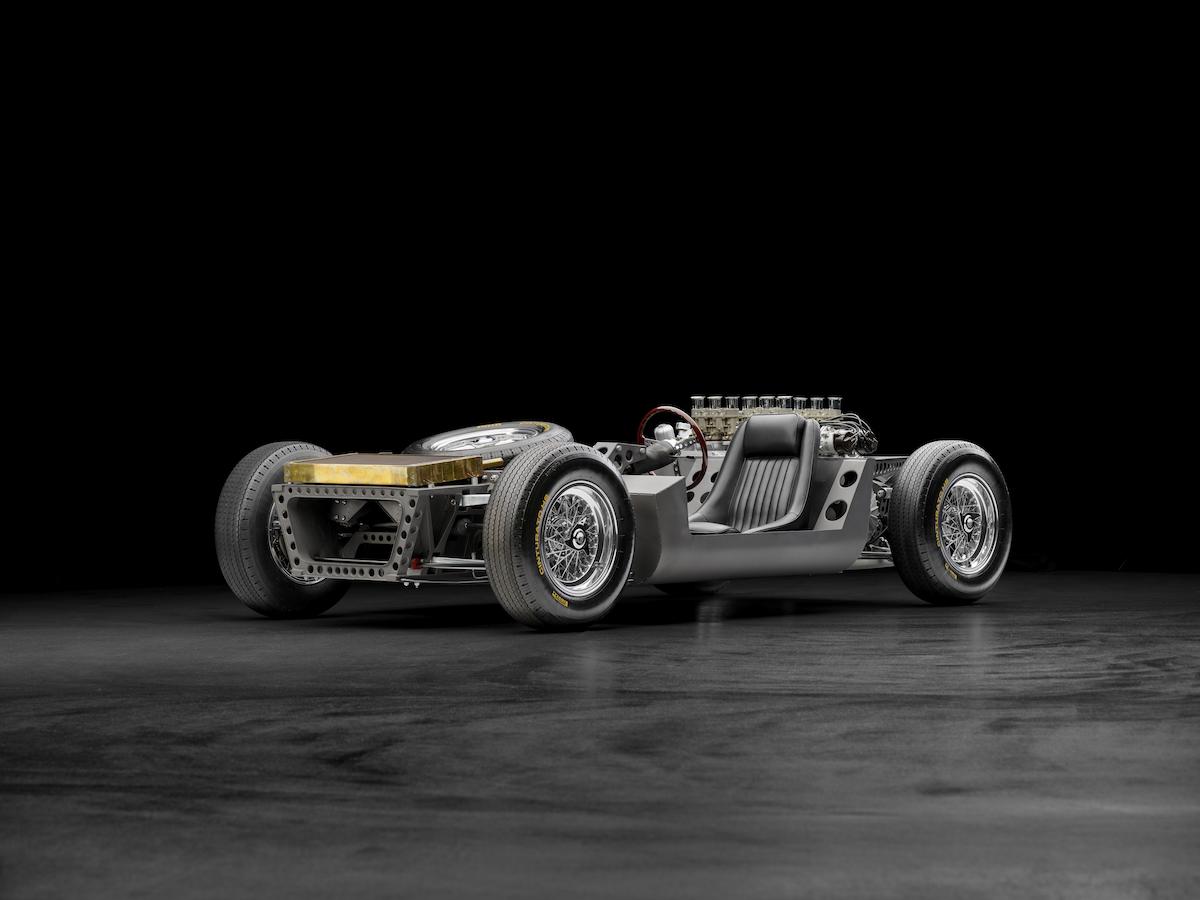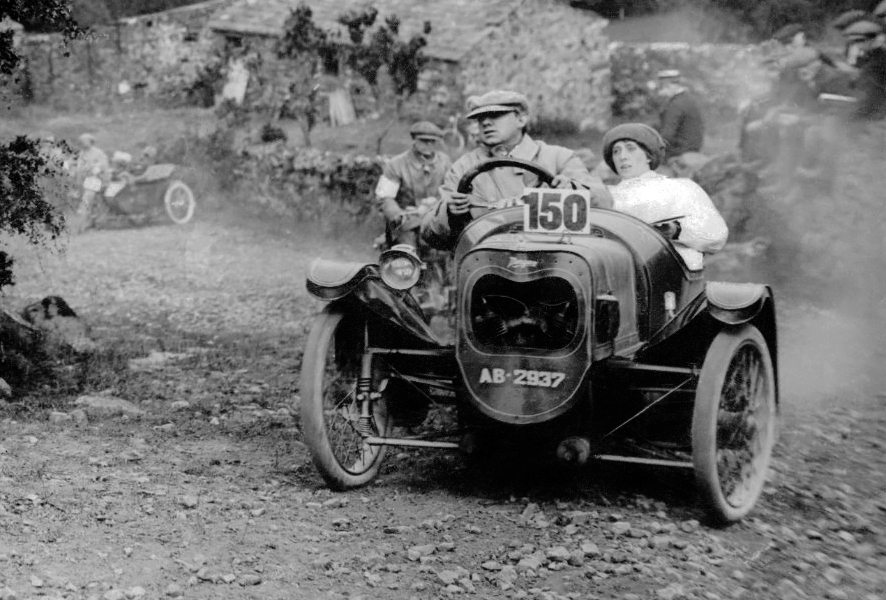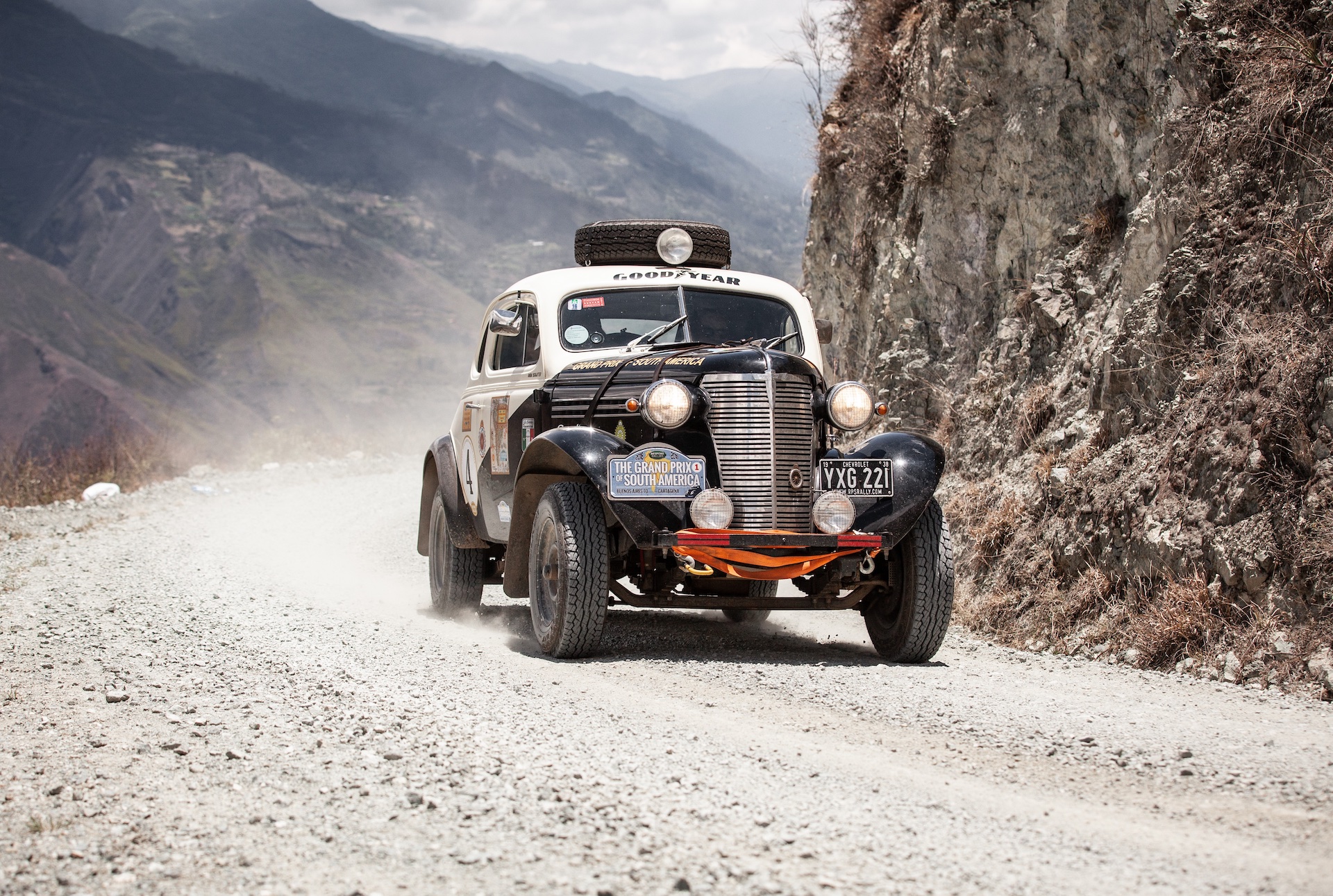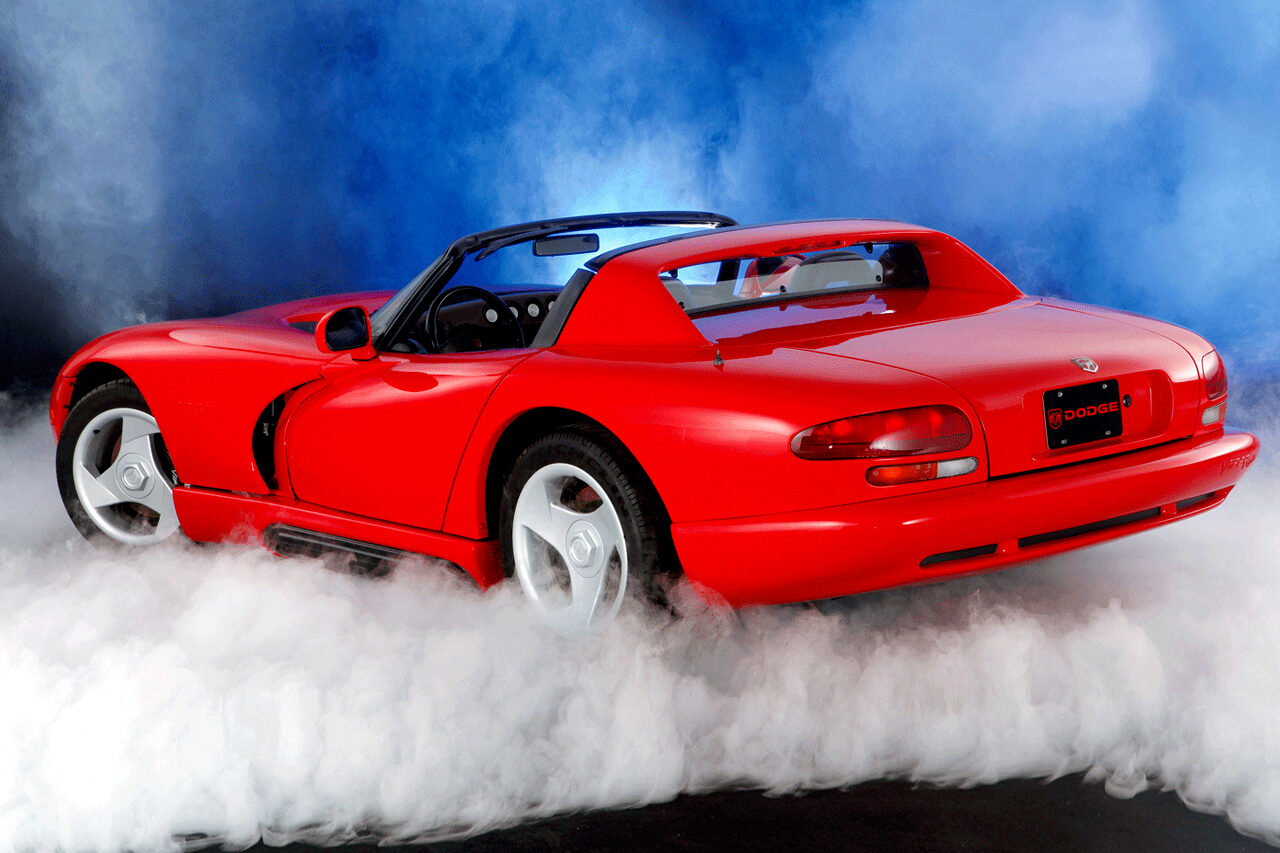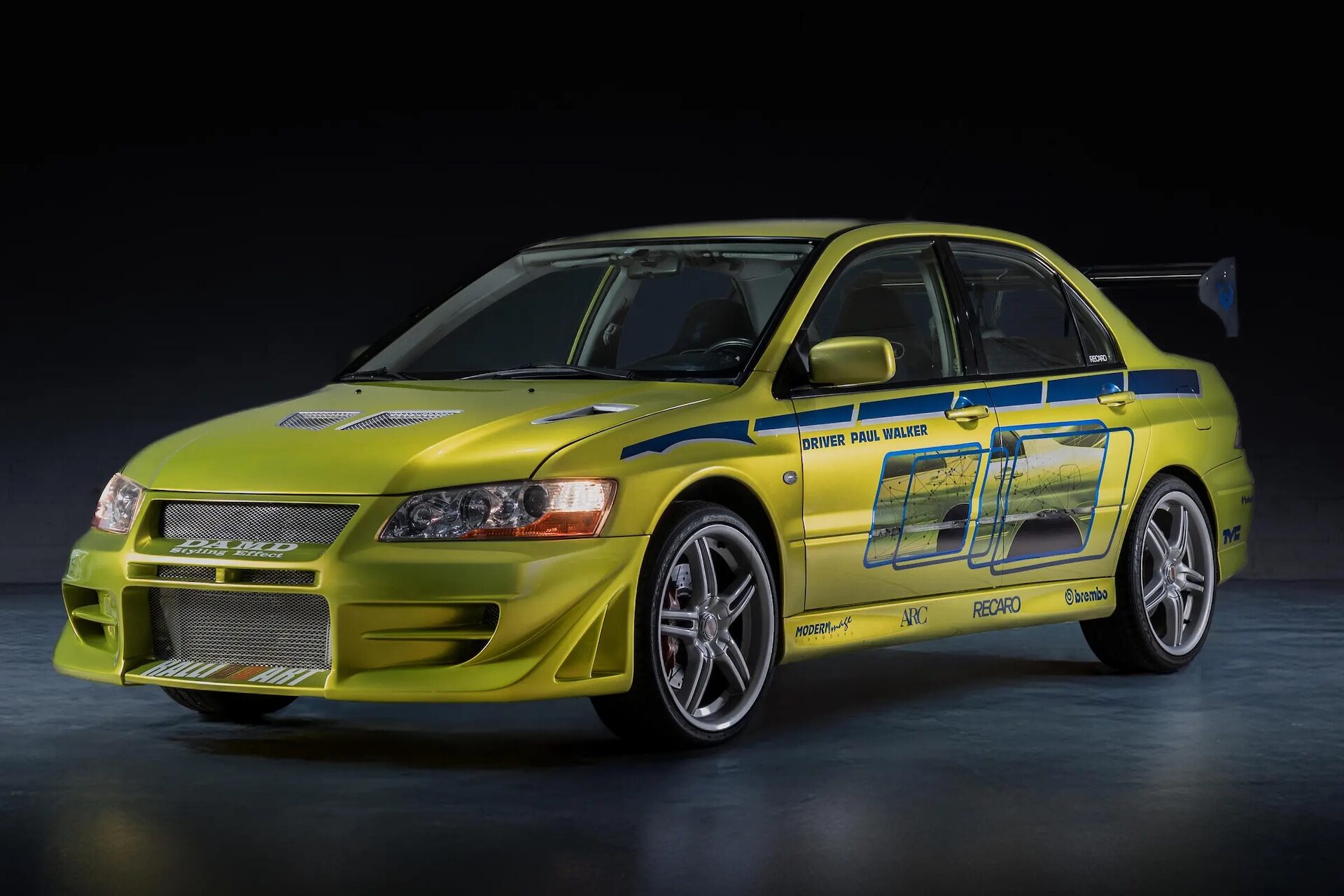Our devotee of automotive history, Cliff Chambers, explains how a fighter plane inspired GM’s greatest designer to add fins to the 1948 Cadillac, sparking a design trend that captured the automotive world.
When car designer Harley Earl viewed the tailfins of a top-secret World War II aircraft, synapses triggered in his brain and the shape was locked away for a future automotive application that would eventually make young Harley famous and his car designs world-renowned. Almost a decade later and with the USA experiencing peace time prosperity, Cadillac needed a vibrant shape to attract a new generation of aspirational car buyers. Earl headed the team at GM who would deliver that change. Cadillac needed a vibrant shape to attract a new generation of aspirational car buyers. Earl headed the team who would deliver that change.
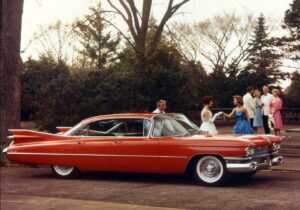
For 1948 they created an entirely new Cadillac; lower, wider and lighter with extra glass and different in profile from any predecessor. The all-new Series 62 Cadillac sat on the same wheelbase and was the same length as the pre-War design it replaced but looked longer and, importantly, faster than the cars that came before it. Pivotal to that illusion were Harley Earl’s ‘winglets’ – tiny fins inspired by the once-secret Lightning fighter plane that sat atop each extended rear fender (mudguard) – which would herald a revolution in US car design.
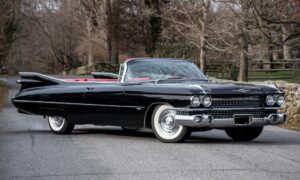
The modern shape did indeed bring a new generation of buyers to Cadillac showrooms. Sales of the mainstream 62 Series reached 55,000 for the 1948 model year, almost doubling Cadillac’s annual total from two years earlier. Cadillac had, for 1947, introduced fastback styling to its two-door Sedanette. For 1948, the revised version pioneered a boot lid with complex curves that dived spectacularly between the finned rear wings.
When you’re on a good thing, ruin it! How 1950s Caddy’s lost the styling plot.
‘When you’re on a good thing, ruin it,’ was a maxim that afflicted numerous car makers over many decades and Cadillac was no different. Someone within the company obviously wanted Caddy’s 1950 shape to look more serious and imposing. While the restyled cars retained their fins, the clean lines of 1948-49 were overwhelmed by an excess of sheet metal and chrome plating. The bumpers went from hefty to immense. Tyres on the reshaped cars had massive sidewalls but still were half buried by overhanging wheel arches. The door line appeared higher than it had in 1949, although it wasn’t. There were, it must be said, some plus points including a new overhead valve V8 engine that had appeared without any great fanfare in 1949. The new engine at 331 cubic inches (5.4 litres) was smaller than the 346 cubic inch (5.6-litre) side valve V8 it replaced, with five main-bearings instead of three and a 10bhp (7kW) power increase. The weight of typical 1949 model year Cadillacs wasn’t significantly more than the previous model, unless you bought a scarce 62 Series Convertible, which weighed 2.3-tonnes and of which only 4507 were made. Uncommon for a North American brand during the consumer-driven 1950s, Cadillac also chose to barely alter the shape of the cars that it built from 1950 until 1955.
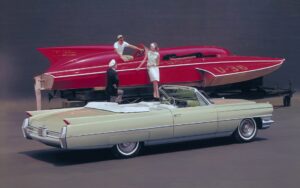
Even when the wheelbase for 62 Series cars was lengthened for the 1954 model year, no significant alterations to the sheet metal were made. Under the skin, however, Cadillac adopted Buick Dynaflow transmissions after the plant supplying the former Hydramatic autos burned down. Finally in 1955, Cadillac’s stylists took steps to enliven a shape that had begun to look seriously outdated and dowdy. Other brands were by then also adopting finned profiles for their new season models, tempting Cadillac to embark on a period of extreme one-upmanship.
How Cadillac’s extraordinary 1955 Eldorado Biarritz took fins to the next level.
Enter Cadillac’s 1955 Eldorado Biarritz, which offered luxury at its most extreme and fins that owed more to the amphibian world than aerodynamics. Eldorado fins were pin sharp rather than rounded, with taillights mounted halfway up, rather than as the top of the fin itself. For 1955 wound back their use of chrome embellishments but still retained their ‘Dagmar’ bumper projections – the nickname of busty 1950s TV actress Jennie Lewis. Cadillac’s shape continued to evolve slowly towards 1957 and appearance of the extraordinary Eldorado Brougham.
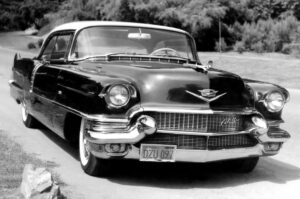
People in the USA with virtually limitless wealth had been buying Rolls-Royce Silver Clouds or customized limousines, inspiring Cadillac to offer the most expensive and exclusive sedan of the post-WW2 era. The Brougham sat on a Series 70, 3200mm chassis with a 365 cubic inch (6.1 litre) V8 and four-speed automatic transmission. It was the first production Cadillac to feature quad headlamps and the only one ever with a roof stamped out in stainless steel. At more than US$13,000, it cost three time the price of a standard Cadillac Coupe de Ville.
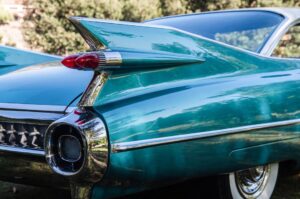
The move to quad headlamps then spread across the Cadillac range and by 1958 every version had them. That year brought other changes as well to help define Cadillac as North America’s most distinctive prestige car. There was moderation of the fin design but addition of stainless-steel shrouds covering the lower body from rear door to bumper on the Fleetwood 60 Special.
How the 1959 ‘King Fin’ Cadillacs provided a fitting tribute to Harley Earl’s decades of automotive styling genius.
Nothing though could prepare America for the 1959 ‘King Fin’ Cadillacs. These were the last new Cadillac designs to be overseen by Harley Earl and a fitting tribute to his decades of automotive styling genius. The ’59 was Cadillac’s biggest, most imposing and powerful model. It also delivered the company’s most successful year, with sales topping 149,000.
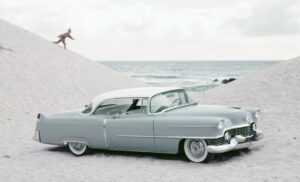
Most spectacular of the King Fins was the Biarritz convertible which offered as standard a triple carburettor 6.4-litre V8 and 212kW. Cadillac during 11 years of styling leadership had inspired virtually every other North American brand to deliver its own take on the tailfin. The only mainstream US model to escape fin-free was the Corvette, although from 1958 it did succumb to the allure of paired headlamps. Other brands would add fins inspired by the Cadillac concept but which were different in their execution.
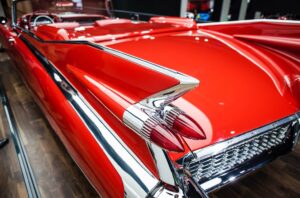
Buick avoided the issue until 1958, then produced a range that were almost
clones of the Cadillac shape. Chevrolet had distinctive prongs in 1957, went fin- free for 1958 then came back with its famous ‘bat wing’ shape for 1959-60. Cadillac’s main rivals, Ford’s Lincoln-Mercury Division and Chrysler’s Imperial became obsessive about fins while still attempting to ensure they looked nothing like the ones on Cadillacs. In other parts of the world, companies with new designs on late-1950s drawing boards hastened to adapt the latest US fad. Sadly, time moves faster than automotive development and by the time cars like BMC’s Farina-styled Austins, Peugeot’s 404, Mercedes-Benz Fintail series cars, and the Michelotti-styled Triumph Herald reached production, fins were falling from fashion..
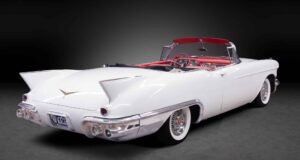
In Australia, with inspiration trickling slowly down from the Northern Hemisphere, the FB-EK Holden and Series 2 Morris Major/Austin Lancer were late adopters of the fin. These 1959 model cars were stuck with their designs until the 1960s, but still managed to shed their fins faster than Sunbeam’s Alpine and Tiger sports cars which retained their shape until 1967.



